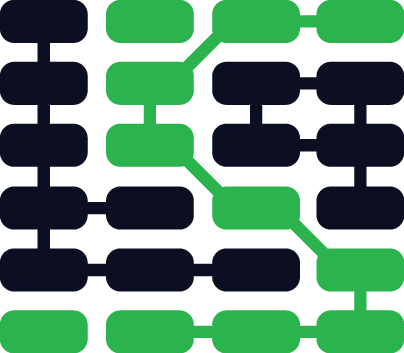Monitoring
Monitoring tools capture, analyze and display information for a web application's execution. Every application has issues arise throughout all levels of the web stack. Monitoring tools provide transparency so developers and operations teams can respond and fix problems.
Why is monitoring necessary?
Capturing and analyzing data about your production environment is critical to proactively deal with stability, performance, and errors in a web application.
Monitoring layers
There are several important resources to monitor on the operating system and network level of a web stack.
- CPU utilization
- Memory utilization
- Persistence storage consumed versus free
- Network bandwidth and latency
Application level monitoring encompasses several aspects. The amount of time and resources dedicated to each aspect will vary based on whether an application is read-heavy, write-heavy, or subject to rapid swings in traffic.
- Application warnings and errors (500-level HTTP errors)
- Application code performance
- Template rendering time
- Browser rendering time for the application
- Database querying performance
Monitoring Third Party Services
-
New Relic. Application and database monitoring as well as plug ins for capturing and analyzing additional data about tools in your stack.
-
CopperEgg is lower-level monitoring on server and infrastructure. It's popular with DevOps shops that are making changes to their production environments and want immediate feedback on the results of those modifications.
-
Status.io focuses on uptime and response metrics transparency for web applications.
-
StatusPage.io (yes, there's both a Status and StatusPage.io) provides easy set up status pages for monitoring application up time.
-
PagerDuty alerts a designated person or group if there are stability, performance, or uptime issues with an application.
Open source monitoring projects
-
statsd is a node.js network daemon that listens for metrics and aggregates them for transfer into another service such as Graphite.
-
Graphite stores time-series data and displays them in graphs through a Django web application.
-
Bucky measures the performance of a web application from end user's browsers and sends that data back to the server for collection.
-
Sensu is an open source monitoring framework written in Ruby but applicable to any programming language web application.
-
Graph Explorer by Vimeo is a Graphite-based dashboard with added features and a slick design.
-
PacketBeat sniffs protocol packets. Elasticsearch then allows developers to search the collected data and visualize what's happening inside their web application using the Kibana user interface.
-
Munin is a client plugin-based monitoring system that sends monitoring traffic to the Munin node where the data can be analyzed and visualized. Note this project is written in Perl so Perl 5 must be installed on the node collecting the data.
Monitoring resources
-
Practical Guide to StatsD/Graphite Monitoring is a detailed guide with code examples for monitoring infrastructure.
-
Bit.ly describes the "10 Things They Forgot to Monitor" beyond the standard metrics such as disk & memory usage.
-
The Collector Highlight Series has an article on StatsD that explains how to install it and how it works.
Monitoring learning checklist
Review the software-as-a-service and open source monitoring tools below. Third party services tend to be easier to set up and host the data for you. Open source projects give you more control but you'll need to have additional servers ready for the monitoring.
My recommendation is to install New Relic's free option with the trial period to see how it works with your app. It'll give you a good idea of the capabilities for application-level monitoring tools.
As your app scales take a look at setting up one of the the open source monitoring projects such as StatsD with Graphite. The combination of those two projects will give you fine-grained control over the system metrics you're collecting and visualizing.
What topic do you want to learn next?
Monitoring
Need more detailed tutorials and walkthroughs than what is presented here? Sign up for an email alert when that content is created.
Matt Makai 先生在社区的协助下设计并编写了这个站点。如果你有Github账号,可以 follow他哦。想跟近这本书的最新状态去Github Star 这个项目吧!

